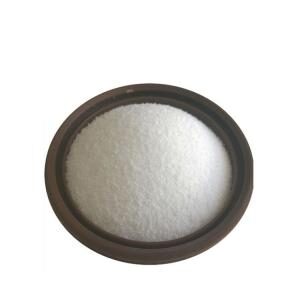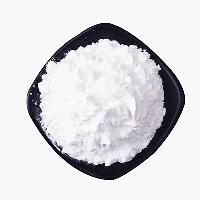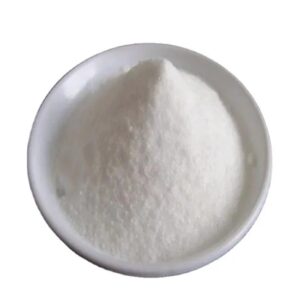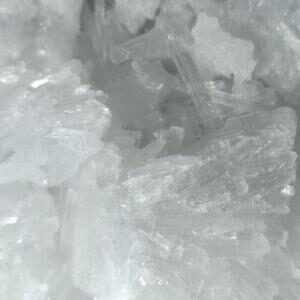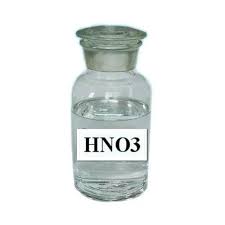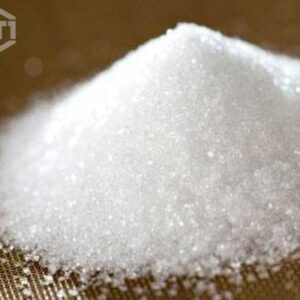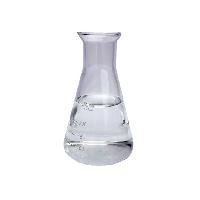Acquire Phenylboronic Acid from Factory Supply – CAS Number 864759-63-7, CAS Number 98-80-6
Factory supply Phenylboronic/ Boronic acid CAS NO. 864759-63-7, CAS NO. 98-80-6 from Factory Supply. Phenylboronic Acid, also known as Benzeneboronic Acid, abbreviated as PhB(OH)₂ where Ph represents the phenyl group C₆H₅-, is a boronic acid with a phenyl substituent and two hydroxyl groups attached to a boron atom. This compound appears as a white powder and is extensively utilized in organic synthesis. Boronic acids are considered mild Lewis acids, known for their stability and ease of handling, which makes them crucial in organic chemistry. Purchase Phenylboronic Acid – CAS Number 864759-63-7, CAS Number 98-80-6.
Phenylboronic Acid exhibits solubility in most polar organic solvents, though it is less soluble in hexanes and carbon tetrachloride. This molecule is characterized by its planar structure with idealized C₂v molecular symmetry. The boron atom within the compound is sp²-hybridized and contains an empty p-orbital. Orthorhombic crystal formations use hydrogen bonding to create dimeric units consisting of two molecules each. These dimeric units further extend into a network through hydrogen bonding. The molecule maintains a planar conformation with slight bending around the C-B bond, measuring 6.6° and 21.4° for the two PhB(OH)₂ molecules. Purchase Phenylboronic Acid – CAS Number 864759-63-7, CAS Number 98-80-6.
Synthesis of Phenylboronic Acid
Phenylboronic Acid can be synthesized through various methods. A commonly employed technique involves the reaction of phenylmagnesium bromide with trimethyl borate to form the ester PhB(OMe)₂, which is subsequently hydrolyzed to yield the desired product. Alternative synthesis routes may involve electrophilic borates to capture phenylmethyl intermediates derived from phenyl halides or directed ortho-metalation. Additionally, phenylsilanes and phenylstannanes can transmetalate with BBr₃, followed by hydrolysis to produce phenylboronic acid. Another approach includes coupling aryl halides or triflates with diboronyl reagents using transition metal catalysts, and aromatic C-H functionalization can also be performed using transition metal catalysts. Purchase Phenylboronic Acid – CAS Number 864759-63-7, CAS Number 98-80-6.
Reactions Involving Phenylboronic Acid
The dehydration of boronic acids leads to the formation of boroxines, which are trimeric anhydrides of phenylboronic acid. This dehydration reaction is typically driven by thermal energy or occasionally by a dehydration agent. Purchase Phenylboronic Acid – CAS Number 864759-63-7, CAS Number 98-80-6.
Synthesis of Triphenyl Boroxine
Phenylboronic Acid is actively involved in various cross-coupling reactions, where it acts as a source of phenyl groups. A notable example is the Suzuki reaction, where phenylboronic acid and vinyl halides are coupled in the presence of a Pd(0) catalyst and base to produce phenyl alkenes. This method has been generalized for producing biaryls by coupling phenylboronic acid with aryl halides. Purchase Phenylboronic Acid – CAS Number 864759-63-7, CAS Number 98-80-6.
Phenylboronic Acid is frequently used in C-C bond-forming processes as a reagent. Alpha-amino acids can be synthesized through the uncatalyzed reaction involving alpha-ketoacids, amines, and phenylboronic acid. Additionally, Heck-type cross-coupling of phenylboronic acid with alkenes and alkynes has been demonstrated. Purchase Phenylboronic Acid – CAS Number 864759-63-7.
Phenylboronic Acid can also be utilized to generate aryl azides and nitroaromatics. Furthermore, phenylboronic acid can be regioselectively halodeboronated using aqueous bromine, chlorine, or iodine. Purchase Phenylboronic Acid – CAS Number 864759-63-7, CAS Number 98-80-6.
Boronic Esters
Boronic esters are formed through the condensation of boronic acids with alcohols. This reaction involves the substitution of the hydroxyl group with alkoxy or aryloxy groups. The transformation is typically driven to completion using a Dean-Stark apparatus or a dehydration agent to remove water.
As an extension of this reactivity, PhB(OH)₂ can be employed as a protecting group for diols and diamines. This reactivity underpins the use of phenylboronic acid in various applications such as carbohydrate receptors and sensors, antimicrobial agents, enzyme inhibitors, neutron capture therapy for cancer treatment, transmembrane transport, as well as bioconjugation, and protein and cell surface labeling.
Quick Details
- Classification: Pharmaceutical Intermediates
- CAS Number: 98-80-6
- Name: Phenylboronic Acid
- Molecular Formula: C₆H₇BO₂
- Melting Point: 217-220°C
- Boiling Point: 265.9°C at 760 mmHg
- Refractive Index: 1.534
- Flash Point: 114.6°C
- Purity: 98%
- EINECS Number: 202-701-9
- Appearance: White powder
Quality Assurance
- Appearance: White crystalline powder – conforms
- Assay (HPLC): 99.0% minimum – 99.7779%
Available Sources
- Phenylboronic Acid 95, CAS Number 98-80-6 – Sigma-Aldrich
- Benzeneboronic Acid, 98+% – Alfa Aesar
- Phenylboronic Acid | CAS 98-80-6 – SCBT
- Phenylboronic Acid (contains varying amounts of Anhydride) – ECHEMI
- Factory Supply Phenylboronic/Boronic Acid – CAS Number 864759-63-7, CAS Number 98-80-6
Find Wholesale Phenylboronic Acid Batches – Available on lilcentglobalmedicalpharmacy.com

